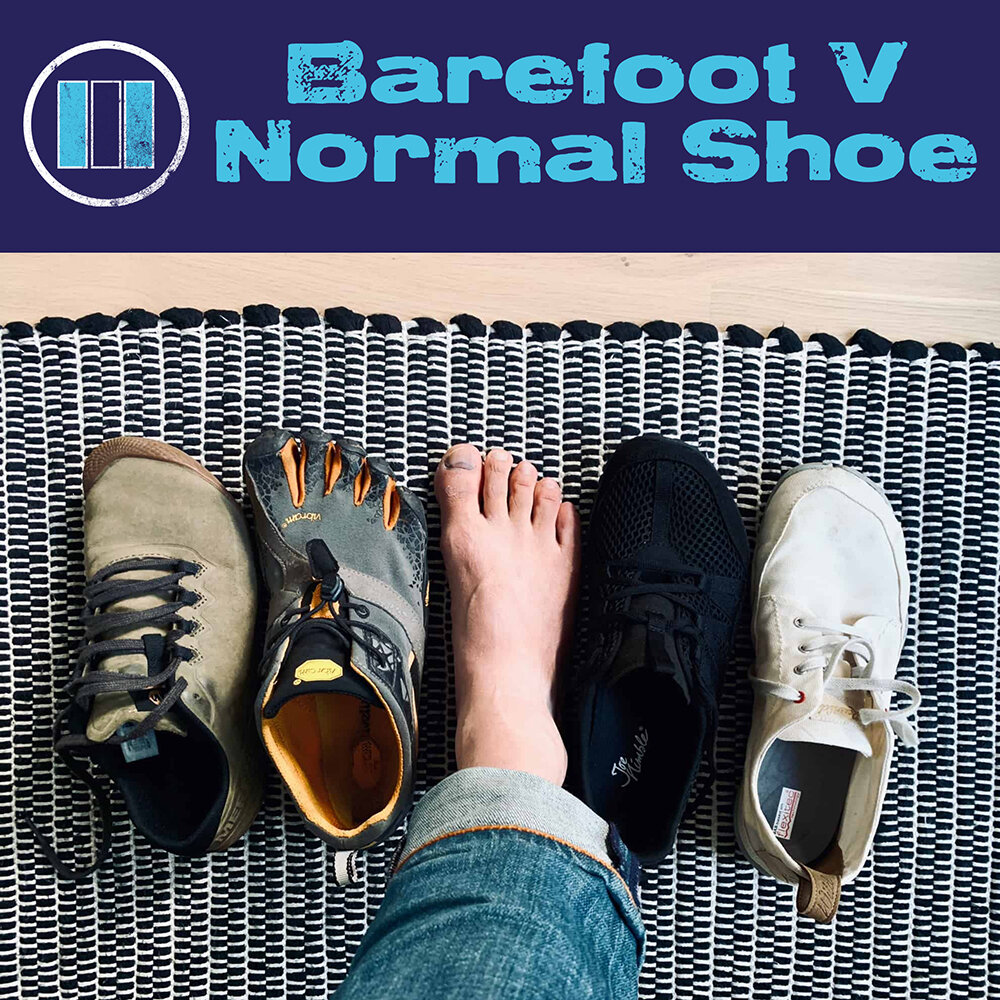Is Barefoot Better? - An Oxford Personal Trainers' Guide - Part 1
https://www.hugomorgan.com/natcoblog
The shoe has developed from something quite rudimentary, designed to protect our foot from damage, to a massive fashion industry pushing a vast array of shapes, designs and colours. As personal trainers, we've come to learn a lot about what's good for our feet, and, what's not. This article is going to look at the research comparing barefoot versus shoes to see what the differences are and what the benefits might be to ditching the shoes.
How is walking barefoot different to walking with shoes on?
Research has shown that barefooters have stronger feet and lower legs compared with shoe wearers. In particular the big toe muscle, foot arch and Achilles tendon are much stronger. The front of the foot is also wider, with the big toe less bent inwards and the loading of the foot better spread out across the whole foot instead of higher in specific areas. [1][2][3][4][5]
Barefooters also have different walking and running patterns. The landing of the foot on the ground occurs with much less impact than in shoe wearers, tending to favour a mid to forefoot landing when running instead of a heel landing that is more common in shoe wearers. This is partly why the lower leg and feet of barefooters is stronger, as the barefoot walking/running style uses the muscles to support the load of each step instead of impacting the ground with the heel bone and distributing the forces up into the knee. [6][7][8][9][10][11][12][13]
The differences in strength and movement patterns in barefooters have been shown to reduce knee and hamstring injuries, as well as foot issues relating to deformities.
Growing up barefoot
Kids who grow up barefoot have a range of benefits, with better development of the foot arch and musculature as well as the lower leg muscles and walking/running patterns. Research has also found that their motor development and proprioception was improved from being barefoot. This shows that ditching shoes from a young age could be beneficial for kids physical development, improving general motor skills as well as foot function and health. [14][15][16][17][18][19][20][21]
Injuries
The differences in strength and movement patterns in barefooters have been shown to reduce knee and hamstring injuries, as well as foot issues relating to deformities. It is also better for lateral stability (reduced ankle sprains) and keeps the upper body more engaged, potentially resulting in better spinal support. [22][23][24]
Although this makes it seem like a good idea to switch to barefoot, one should be cautious. The research has shown that during the switch from shoes to barefoot there is an increased risk of foot, ankle and lower leg injuries. This is unsurprising considering the greater loads that are placed on these structures when barefoot, indicating that a certain amount of gradual strengthening needs to occur before the foot and leg can tolerate being barefoot. [25][26][27][28][29]
Switching to barefoot also doesn’t automatically change your walking/running style, and research has shown that gait retraining is also needed when trying to switch to barefoot. Failure to retrain your gait might further increase injury risk by increasing the impact loading effect of your current walking or running style. [30][31][32][33]
End of part 1
In part 1 we have started to see some of the benefits to being barefoot, keeping your foot and leg stronger, influencing better movement patterns and muscle engagements, whilst reducing injuries as long as one doesn't go from shoes to barefoot excessively fast.
In part 2 we are going to look at barefoot shoes, foot hygiene and grounding. It will also include a series of top tips for how to start transitioning from shoes to barefoot safely and effectively.
About The Project PT
The Project PT uses fitness to empower people. Through our Oxford Personal Training Studio, we use 4 pathways to achieve our mission. Our first pathway started in August 2019 creating accessible and fun fitness events in unusual settings, making fitness enjoyable for all. Our second pathway offers free fitness classes for young children, helping them to build a positive relationship with exercise and sport. The 3rd pathway comes in the form of our Movement Studio, a nature-inspired space teaching people how to move their body's in a welcoming and non-judgmental environment. Our 4th pathway is still in the development stages, Youth Lift will engage with young people on the periphery of being excluded from school. Using the medium of lifting weights to empower them to make other positive changes in their lives.


